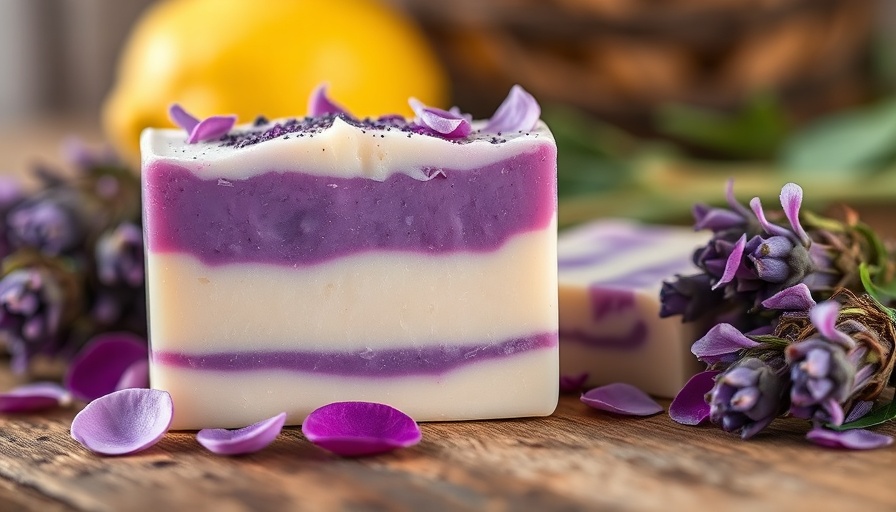
Transform Your Kitchen with Lemongrass and Lavender Deodorizing Soap
In the world of culinary delights, strong smells can linger long after the meal is done. From the robust aroma of garlic to the intoxicating essence of fried foods, even the most passionate home cooks find themselves battling residual scents on their skin. Thankfully, the lemongrass and lavender deodorizing soap emerges as a resolute solution, marrying the powerful deodorizing properties of lemongrass with the calming benefits of lavender.
Understanding Deodorizing Soap
Deodorizing soap goes beyond standard soap to eliminate stubborn odors that cling to the skin, particularly on the hands after cooking. This special formulation not only cleans but bids farewell to unpleasant kitchen smells. Lemongrass, celebrated for its incredible ability to combat tough scents, plays a leading role in this concoction.
Crafting Your Lemongrass Lavender Soap
Creating your own deodorizing soap can be a fulfilling and enjoyable project. With ingredients like organic olive and coconut oil, along with essential oils, your hands will not only feel soft but also boast a delightful aroma. To craft your soap, you'll need:
- 500 ml lavender-infused organic virgin olive oil
- 200 ml organic virgin coconut oil
- 106 ml sodium hydroxide
- 15 ml shea butter
- 10 ml lemongrass essential oil
- 5 ml peppermint essential oil
- 1.5 tsp purple mica powder
- Dried calendula petals for decoration
Step-by-Step Process
Making soap is an art that requires precision. Start by measuring all ingredients accurately. Heat the oils until they reach 115°F, then carefully mix in the lye with water, making sure to wear protective gear. When both mixtures are at the desired temperature, blend them together until a light trace forms, before adding the essential oils and colors.
This particular recipe allows for a lovely layered effect, showcasing both the undyed and purple soap flecked with dried calendula petals—a feast for the eyes and a joy for the senses!
Cold vs. Hot Infusion: Which is Best?
The infusion method you choose for the lavender oil can affect the properties and aroma of the final product. Cold infusion involves letting the lavender steep in oil for several weeks, resulting in a mild and fragrant oil. In contrast, hot infusion allows for quicker extraction of the herb's qualities and imparts a more potent scent. Both methods have their merits, depending on whether you prefer immediacy or patience for a refined outcome.
The Power of Scented Soap Beyond the Kitchen
While the primary function of lemongrass and lavender deodorizing soap is to tackle kitchen odors, its uses extend far beyond that. The gentle formulation nourishes the skin while also providing therapeutic benefits due to lavender’s properties that promote relaxation and stress relief. Moreover, it can be used after exercising to combat body odors or simply as a delightful addition to your shower routine.
Common Misconceptions About Deodorizing Soaps
Many people believe that basic soap can handle all types of odors, but this isn’t entirely true. Deodorizing soaps are specifically formulated to combat and neutralize stubborn smells caused by food or sweat. If the right ingredients aren't included, you may still find residual odors—reinforcing the need for specialized products.
Planning Your Soap-Making Adventure
Embarking on soap making requires some preparation but is ultimately a rewarding creative outlet. With numerous resources available, including video tutorials and community workshops, you can cultivate your skills while sharing moments with friends or family. Why not invite fellow gardening enthusiasts or aspiring soap makers to join in the fun?
As you explore this aromatic craft, think back to the delightful scents and memories associated with your culinary creations. Don’t let the lingering odors detract from the joy of a meal well made!
Final Thoughts
With the combination of soothing lavender and vibrant lemongrass, this deodorizing soap not only provides a solution for strong kitchen scents but also serves as a testament to the beauty of homemade creations. So why not dive into your own soap-making adventure with this simple yet powerful recipe? Your hands will thank you!
 Add Row
Add Row  Add
Add 




Write A Comment